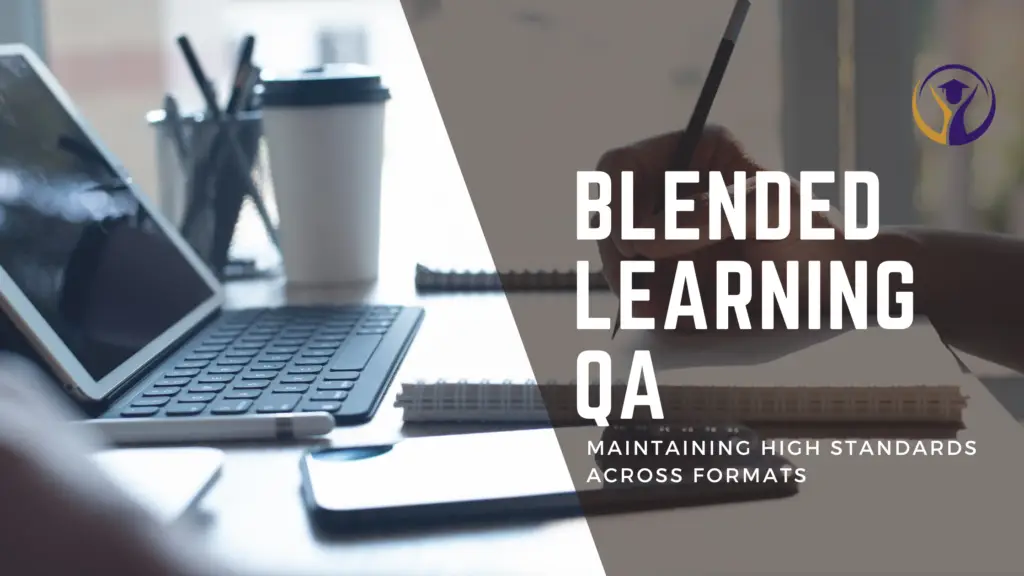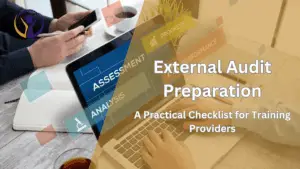Why Blended Learning Quality Assurance Matters
Blended learning combines the best of both worlds—flexibility from online and engagement from in-person learning. However, it brings with it the need for strong blended learning quality assurance. Challenges such as inconsistent learner experiences, weak assessment design, or tech limitations can quickly reduce the effectiveness of training.
1. Develop a Unified QA Framework for Blended Learning
To ensure consistency, training providers should develop one overarching QA policy that applies to both formats. It should clearly outline:
Learning objectives
Trainer expectations
Assessment approaches
Monitoring and evaluation processes
Our Documentation Support services and Internal Education Audit can help make this process easier.
2. Standardise Assessment Procedures Across Formats
Assessments should be equivalent whether done online or in person. You’ll want:
Clear rubrics
Moderation checks
Regular internal reviews
Use the QQI Blended Learning QA Guidelines as a benchmark and document everything for traceability.
3. Support Trainers for Blended Learning Delivery
Delivering online training requires different skills. Support your trainers with:
Digital facilitation training
Familiarity with your LMS
QA-focused session planning
You can enhance your team’s readiness through our Educational Compliance Services.
4. Maintain Version Control for Learning Materials
With resources stored across platforms, it’s easy to lose control. Introduce:
Document registers
Version numbers on resources
Responsibility for updates
We offer simple, compliant systems for this through our Documentation Support.
5. Audit Your Learning Platforms and Tools
Your LMS or online platform should be secure, accessible, and user-friendly. Include:
Security protocols
Regular platform checks
Backup systems
Reference the National Forum for the Enhancement of Teaching and Learning for best practices in digital tools.
6. Capture Learner Feedback Across All Delivery Methods
Feedback is a vital QA tool. Use:
Digital feedback forms
Live polls in sessions
End-of-course evaluations
Collect and analyse this feedback regularly as part of your internal quality review.
How CQAS Supports Blended Learning Providers
At CQAS, we help you build and sustain blended learning quality assurance systems. Our team supports training providers with:
QA documentation and audit preparation
Blended learning policy development
Assessment moderation tools
Compliance guidance aligned with QQI and PHECC
👉 Contact us today to arrange a free consultation and see how we can support your QA goals.
Final Thoughts
Blended learning is here to stay—but success depends on the systems behind it. With the right QA strategy in place, your delivery can be flexible and consistently high-quality.
Whether you’re already delivering blended training or just starting, CQAS is here to help you get it right.


